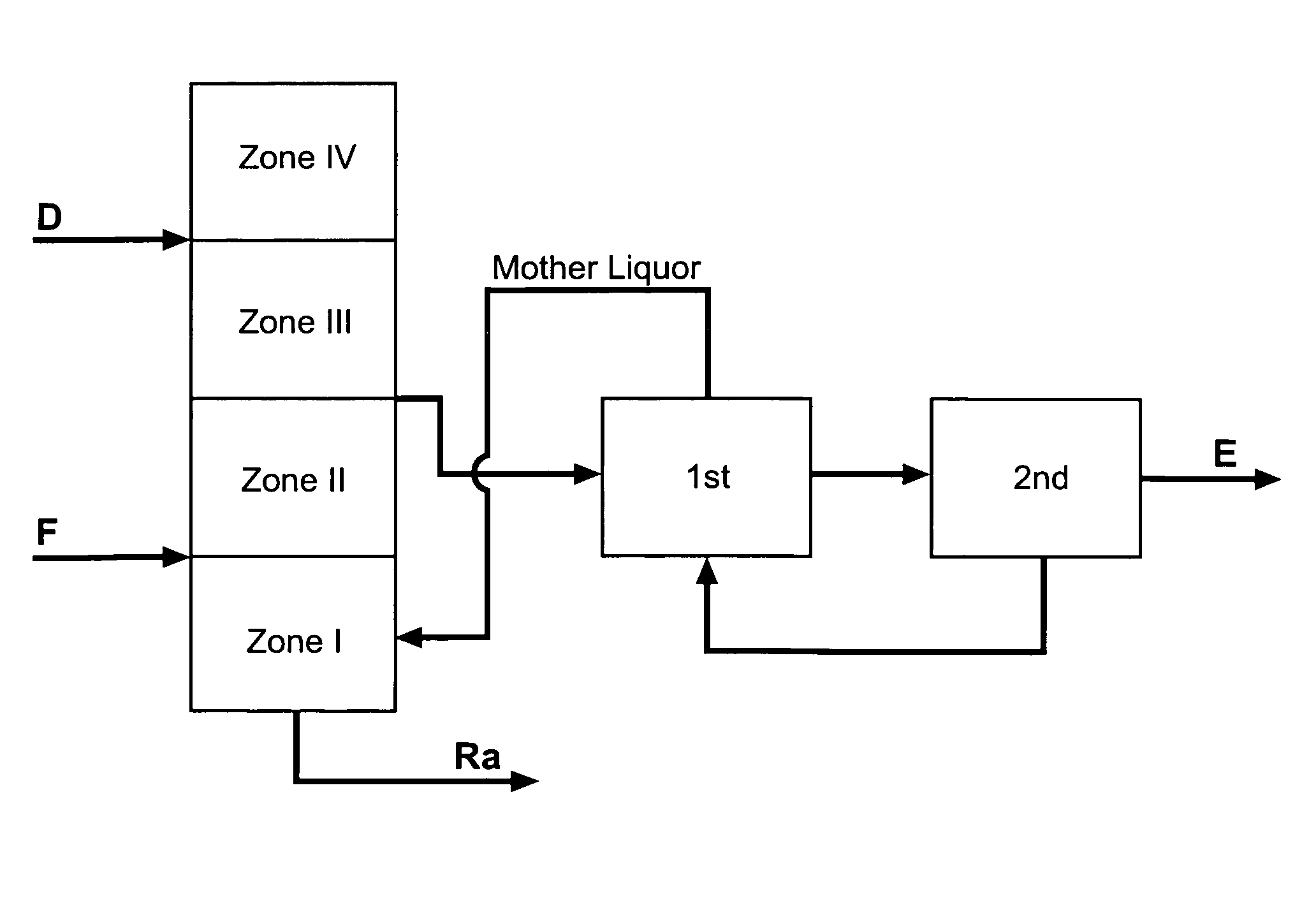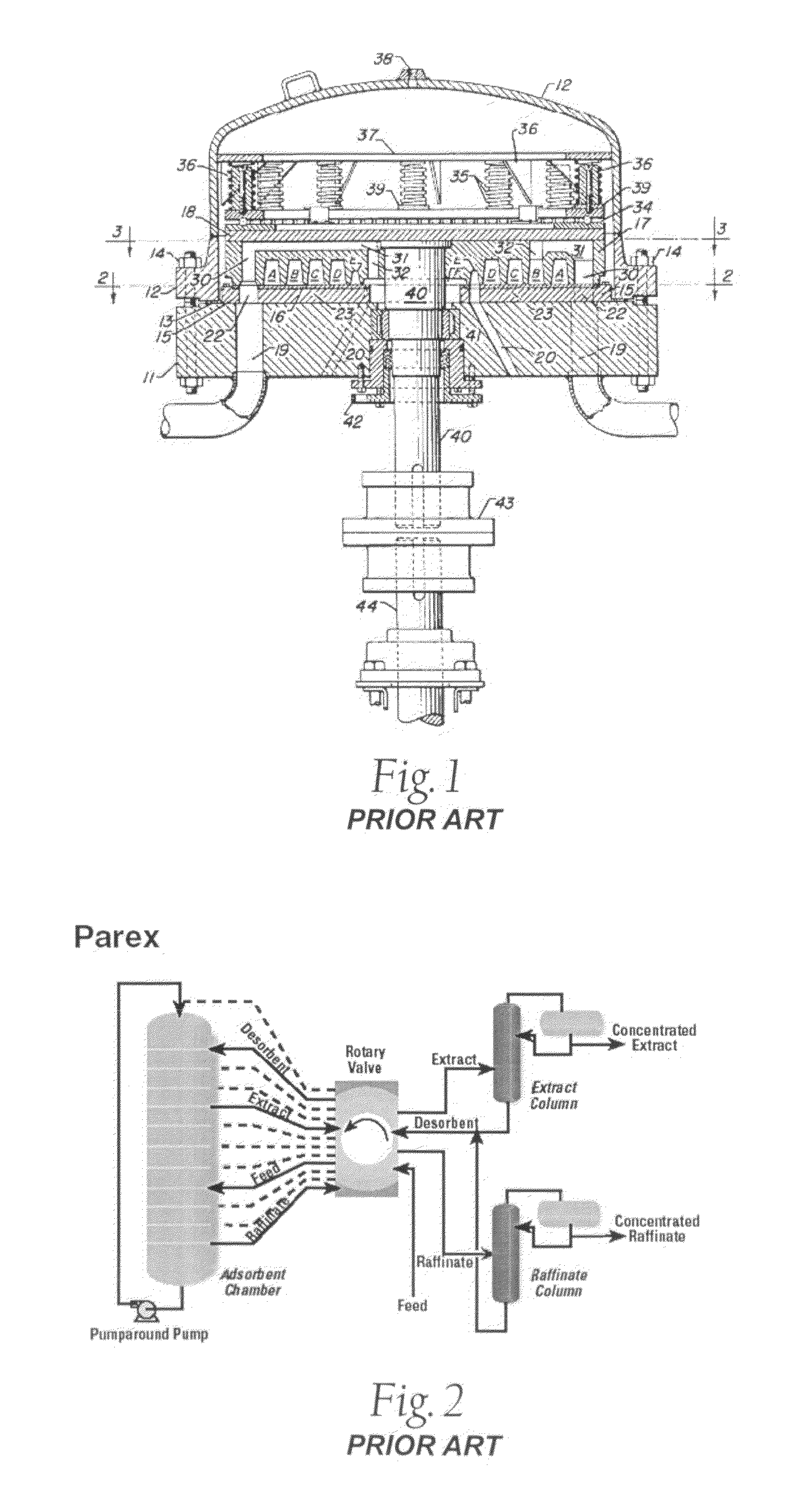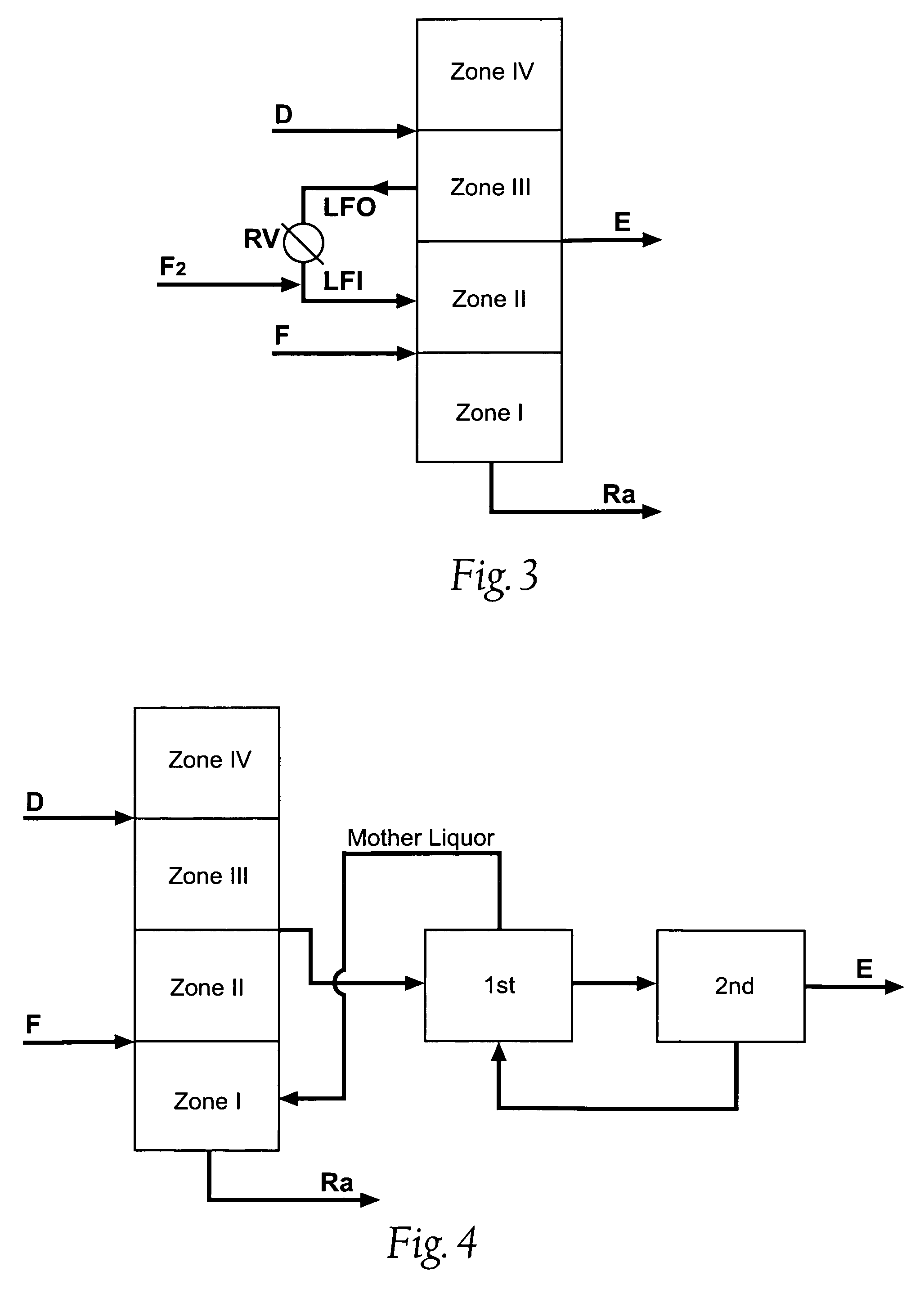Simulated moving bed adsorptive separation process for handling multiple feedstocks
a technology of simulated moving bed and feedstock, which is applied in the direction of separation process, organic chemistry, chemistry apparatus and processes, etc., can solve problems such as preventing product recovery or complicated product recovery, and achieve the effect of increasing the capacity of a simulated moving bed and reducing the number of process units, increasing the capacity of a simulated moving bed
- Summary
- Abstract
- Description
- Claims
- Application Information
AI Technical Summary
Benefits of technology
Problems solved by technology
Method used
Image
Examples
example
[0068]In order to verify the improvement expected from the present invention, a comparison was performed using a computerized model which has been shown to accurately predict and correlate with the actual operation of a given commercial scale simulated moving bed adsorptive separation unit used to recover para-xylene from a mixture of xylene isomers.
[0069]In this experiment, as is often the case commercially, it is assumed that the operator of the commercial process unit would have available to it two distinct sources of para-xylene containing feed stock. The simulated unit was assumed to have twenty-four beds of adsorbent which may commercially be divided between two columns and utilize a twenty-four port rotary valve to direct the flow of the process streams. For the purpose of explaining with further clarity the implementation and benefits of the present invention, but not meant to imply any limitation or requirement thereof, feed A is a first feed material stream originating fro...
example 2
Multiple Use Valves
[0074]As discussed above, systems referred to as simulated countercurrent moving bed units (“SMB”) require a stream usually called line flush to purge the inventory of feed composition material in such piping before that same piping is used for the production / evolution of extract from the process unit. FIG. 1 shows a typical rotary valve (RV) and associated piping for use with the RV used in SMB processes. FIG. 2 shows a flow diagram of a typical SMB process. Since the volume of the liquid in such bed line and crossover pipe and RV track may be a large enough volume to contaminate the extract product, this line flushing is a critical step in making high purity product.
[0075]FIG. 3 depicts a flow diagram according to the present invention. Because the line flush is between the feed point and the extract point, it is ideally suited to be also used for the injection of a second feed material (F2) so long as that second feed material is of a paraxylene (px) concentrat...
example 3
Feeds with Low Concentrations of Ethylbenzene
[0077]The concepts discussed above can further exploit the low concentration of ethylbenzene (EB) in mixed xylene products obtained from toluene disproportionation process units (TDUs) by injecting this product stream higher in the purification zone, i.e., the section of the SMB that is between the feed point and the extract point. Licensors of this type of toluene disproportionation process include ToRay, UOP, ExxonMobil, and others. In these processes, the px concentration is typically 23% and ethylebenxene (EB) concentration is typically 2% on a volume basis. Most TDUs convert toluene into a mixture of benzene and mixed xylene isomers, or convert a mixture of toluene and C9+ aromatics into benzene and mixed xylene isomers. The C8 portion (i.e., the mixed xylene isomers) of the products is particularly valuable for processing in most SMB Units because of the low concentration of EB. For reference, the xylene stream from a Reforming Unit...
PUM
| Property | Measurement | Unit |
|---|---|---|
| LOI | aaaaa | aaaaa |
| pressure | aaaaa | aaaaa |
| concentration | aaaaa | aaaaa |
Abstract
Description
Claims
Application Information
 Login to View More
Login to View More - R&D
- Intellectual Property
- Life Sciences
- Materials
- Tech Scout
- Unparalleled Data Quality
- Higher Quality Content
- 60% Fewer Hallucinations
Browse by: Latest US Patents, China's latest patents, Technical Efficacy Thesaurus, Application Domain, Technology Topic, Popular Technical Reports.
© 2025 PatSnap. All rights reserved.Legal|Privacy policy|Modern Slavery Act Transparency Statement|Sitemap|About US| Contact US: help@patsnap.com



